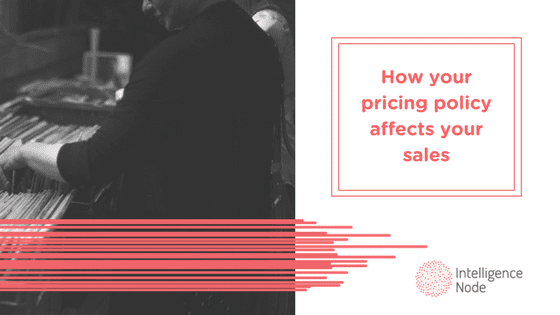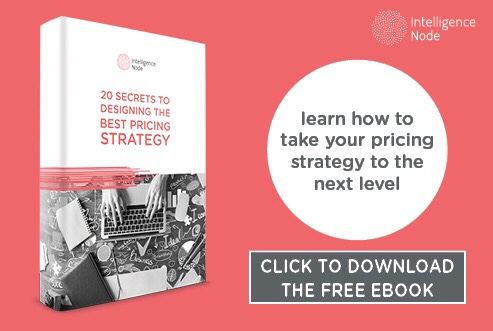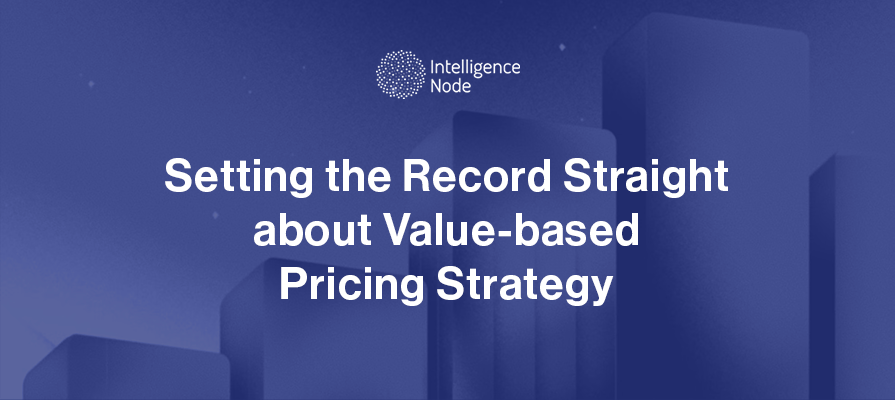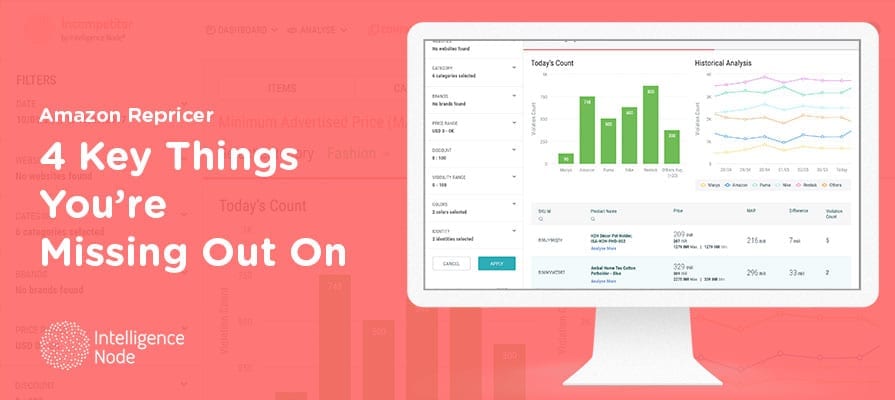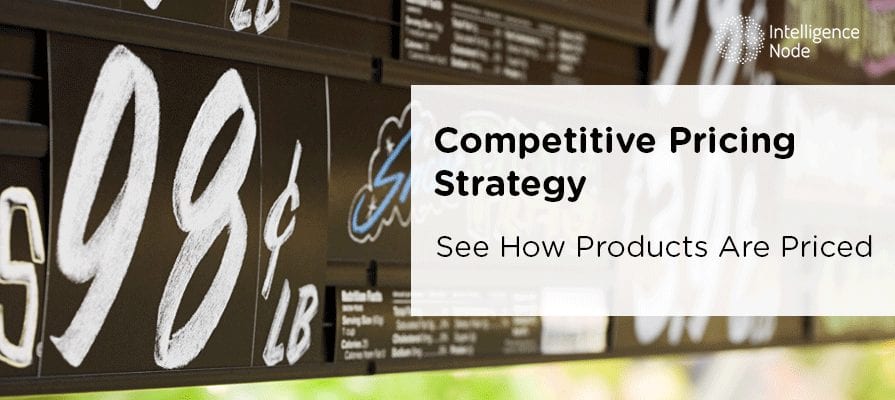Price optimization is one of the key factors in every business operation as it can raise prices whilst improving sales volumes at the same time. Savvy pricing managers will implement it and focus on building their business to cater to the most profitable customer. However, that sounds easier in theory than it is in practice as numerous companies utilize simple pricing policies without identifying important market indicators like the products that are most profitable and customer demands, among others.
Therefore, the decision-making processes are based on the lack of knowledgeable information which leads, in most cases, to bad pricing policies that don’t perform nearly as well as they ideally could and should. Pricing policy has a direct impact on total business revenue and as such, must be carefully thought out. There are best practices companies use to determine and develop their pricing policy. In this article, we’ll show you some of those practices and how they affect sales.
Cost-based pricing policy
Cost-based pricing is determined by adding a fixed profit percentage to the overall cost of a product or service. The end results is a selling price that aims to cover all the costs during production or delivery stage and attain a certain level of profit.
The policy is simple and fast to implement as it doesn’t require much market and competition research. That is why cost-oriented pricing is also extremely popular because it uses information managers can obtain very easy. In addition, the company can easily present a case for defending its prices as they cover the costs for the most part.
Nevertheless, the main drawback of a cost-based pricing policy is its ineffectiveness. Determining costs before pricing is not suited for today’s markets as costs vary depending on volume. In turn, as the price forming is driven solely by costs, this significantly reduces profitability because these prices don’t reflect the true value of the market. In fact, they are closer to being completely opposite to strategic prices as there is no consideration of market conditions.
Joel Dean, professor of business economics at Columbia University, says that “cost is usually the crucial estimate in appraising competitors’ capabilities”, which is what a cost-based pricing policy completely ignores. It also ignores the role of customers, which are two main reason why it usually affects sales in a bad way as it doesn’t take into account these vital factors in order to determine what specific products it wants to manufacture, as well as the quantity of it.
Value-based pricing policy
In this case, the optimal price is a combination of customer’s perception of the value of offered goods and production costs. Companies that use this approach from their prices based on market research such as customer demands, expectations and preferences, financial resources and competition.
Value-based pricing increases profitability by creating customer satisfaction through product’s value attributes. This approach emphasizes the value of your goods and presents the motivation for customers to pay more as they are modeled on what customers want. Also, managers must perform extensive market research and compare what their company is offering with those of their competitors, in order to pinpoint their value, advantages, and disadvantages. That way, they can get a clear picture of what sells on the market and what doesn’t.
Demand-based pricing policy
Similar to value pricing, there is no immediate concern regarding costs. The focus of demand-based pricing is on customer behavior and the quality and attributes of own goods, thus satisfying the level of demand. The prices are formed by accounting both the cost estimates at different sales levels and projected revenues from sales associated with estimated prices. The vital part of the process is accurately
The vital part of the process is accurately determining demand that is the amount of products or services that the company can sell so that the prices can be formed. Thus, a manager needs the assistance of a market expert, preferably a comprehensive software suite with high levels of automation, to estimate increases or decreases in demand. In turn, this will result in prices that will help a business stay ahead of its competition because they will have a comprehensive summary of the ongoing demand trends and thus, produce adequate quantity and quality of products.
Competition-based pricing policy
Finally, we have a policy that forms prices by looking what others are charging. After identifying competition, a company first assesses its own goods and then prices them lower, higher or equal to the competition.
As is the case with cost-based pricing, this policy can be set up quickly as it doesn’t include thorough market data, meaning it’s not as accurate as demand pricing. Still, it enables a business to select different pricing strategies to achieve its goals. Because it can set a higher, lower or on par price compared to its competition, a company can quickly attract and influence customer perceptions of their products because they already have a pre-established customer base.
As an example, company A can set its prices above those of its competitors, which could suggest to customers that its products feature higher levels of quality. This can be seen on an example of Harley-Davidson, who uses much of the same parts suppliers as other big bike companies like, Kawasaki, Yamaha, and Honda. However, because they set their prices above those of the competition, their above-the-market pricing, along with customer loyalty and a certain sense of mystique, signals quality to customers and makes it easier for them to opt for the premium they pay for.
This can be seen on an example of Harley-Davidson, who uses much of the same parts suppliers as other big bike companies like, Kawasaki, Yamaha, and Honda. However, because they set their prices above those of the competition, their above-the-market pricing, along with customer loyalty and a certain sense of mystique, signals quality to customers and makes it easier for them to opt for the premium they pay for.
Effect on sales
Every pricing analyst and expert knows that profit is optimized for every product when the price reflects the customer’s readiness to pay. As Warren Buffet once said:
“Price is what you pay, value is what you get”
meaning business need to look from the customer’s perspective. Hence, pricing must be constantly evaluated based on the customer return and feedback. That is why cost-based pricing policy is a bad fit as it produces little customer return, hence lower sales. The other three pricing policies all have their advantages with one joint factor – market research. Each policy demands a thorough understanding of market trends, competition, customer demand, and needs, as well as production operations for minimizing costs and increasing profit.
This can be a time-consuming and expensive process, which is why the best option here is to utilize an expert pricing software that can provide valuable insights and help make an informed decision. As this requires a large survey of market conditions, an ideal option would be a highly automated software that offers comprehensive solutions for your pricing needs. It could also provide you with an analysis of how competition reacts to your pricing on a regular basis. The key is to make a customer-appealing pricing policy that will balance competitive pricing with satisfactory profit margins by focusing on the value the company delivers to its customer.
Conclusion
Setting a pricing policy means determining prices customers can afford before deciding what products to produce and the general amount of them. Adding in the fluctuating prices and the overall production costs it can pay for, a business can determine whether it can compete in the low-cost market, where customers are first and foremost concerned with the price, or if it can successfully compete in the premium-price market where customers’ primary concerns are the quality and characteristics of your goods. In either case, it means keeping up with constant changes on the market which can be a tough task without help.
If you found this useful and you’d like to learn how to take your pricing strategy to the next level, we invite you to download our free 20 secrets to designing the best pricing strategy eBook. Click below to take advantage of this opportunity.
